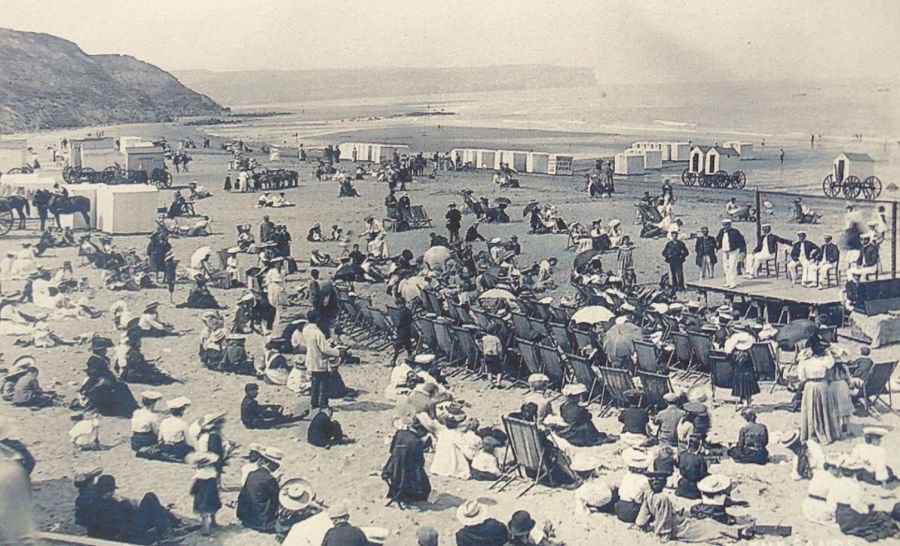Seaside photography has the advantage that it often allows a more relaxed atmosphere without strict arrangement, so that it conveys a more natural impression to the viewer than contemporary studio portraits. As the number of visiting holiday-makers increased over the years, a need for entertainment of various kinds also developed, as this “concert party photograph” from 1905 shows. A performance of this kind lasted an hour, for which it was possible to hire a deckchair for sixpence or throw oneself down on the sand to enjoy a warm summer day. The many big hats, white blouses, belted waists, simple long skirts and white parasols of the women were typical seaside fashion at the time.
To enjoy a day on the shore as a bystander dressed in a delicate white cotton dress was however mostly possible for the well-off and middle classes, judging by this and other similar photographs. Even if larger groups of the society were in the position to enjoy a summer Sunday at the beach in late Victorian and Edwardian time than in earlier years; those who sewed, sold fabric and clothes and washed these fine garments seldom appeared in these photographs taken on the shore, round the Pavilion or walking in the West Cliff area.


The amateur photography was already introduced in the 1890s with small easily operated hand-held cameras, but professionally produces photographs with the use of large cameras was still very much in demand up to the beginning of the First World War. It was also popular to buy professionally made postcards from the seaside resort, sometimes with coloured details. Guide books were another type of memorabilia, both useful during and after the holiday. Horne’s Guide to Whitby from 1897 additionally includes many examples of advertising by local drapers, where amongst others James N. Clarkson & Son address themselves above all to the modern tourist, offering clothes suitable ‘For Seaside, Travelling, Yachting, Cycling, and Golfing...’

(Content reproduced with the kind permission of The IK Foundation and iTEXTILIS.
Original content here...)








